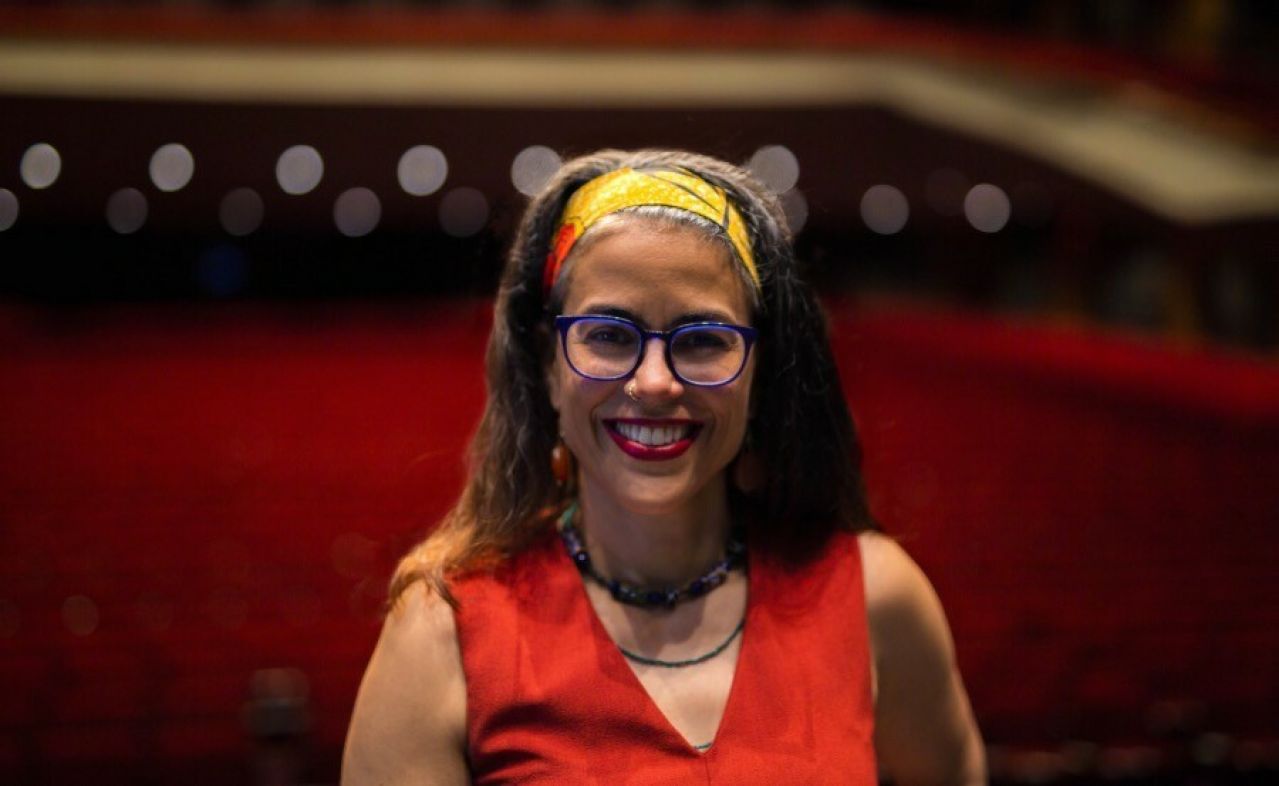June 02, 2021
Real talk with Sita Frederick: Director of Center for the Performing Arts faces ‘wonderful challenges’

By Heather Longley
As a dance artist and educator, Sita Frederick brings a fresh energy and perspective to the position of director of the Center for the Performing Arts. The self-described risk-taker said she expects to encounter “wonderful challenges” in her mission to make the arts more accessible to all.
And while most of Happy Valley has yet to be acquainted with her, she wants everyone to know that the place she comes from is love.
“I would be considered radical for some folks, and there’s some radical ideas that have informed who I have become and who I am,” she said. “But I want to say that my values are centered in love for human dignity.”
Frederick’s vision for the center focuses on community effort and engagement — including sustained collaborative partnerships, broadened outreach and purposeful programming — as the means to enhance a dedicated patron base. One of the community builder’s first steps when she started in March was to hold a casual, virtual lunchtime talk with each of the center’s staff members. In addition, she said she hopes to hold conversations with community leaders, schools and young people to learn more about their thoughts for the center’s path forward.
Issues of belonging and inclusion that are important to Frederick have guided her artistic and career paths. She has performed with Urban Bush Women, Arthur Aviles Typical Theater and Merian Soto Performance Practice. She also co-founded Areytos Performance Works, a dance theater company dedicated to the exploration of themes such as power, race, gender and culture.
“I deeply believe the arts can transform a child’s education [or a person’s] world view … whether I want to carry on the family business and stay local — which is awesome — or whether I want to explore the world around me in new ways,” she said. “In that way, the arts carry traditions, but also innovate and celebrate that tradition.”
As community engagement programs director at New York City’s Lincoln Center, she championed inclusive family programs, initiated mentorship initiatives for young people and embraced community-based artists — all concepts she said she hopes to incorporate into the center’s mission.
In a recent interview, Frederick also shared insight into what she expects in her first year, how to engage new and returning audiences, and the “elephant in the room” of central Pennsylvania.
Big challenges ahead
“To broaden or deepen the work that has already begun here is a wonderful challenge. So how do we more thoughtfully, more intentionally engage with students, with faculty, with staff, with community members and so many different kinds of people?” Frederick said.
“One challenge is that we are in a rural part of the state, but I do see it as an opportunity because I know that there are schools that are unable to fund arts programs, especially in our current educational climate where high-stakes testing is so important.”
For whom are the arts?
“Broadening the idea of ‘what art is’ is another way to answer that question about challenge. There’s a lot of perception about what the arts are.
"In the past, the center has excelled at presenting certain types of arts, and I am excited about the challenge of broadening that. How do we do that with intention and respect — and with people and actual artists?”Bridging communities “Academic and scientific knowledge are built upon lived experience, but where we start is in our bodies and who we are in our minds and finding ways to really connect. (More communities are) finding ways to connect with each other and to grow the arts, and to make sure that more people have access to creative and artistic experiences.” Program and they will come Organizational loyalty is built “through inviting people to participate in what their interests are and showing up beyond our four walls; finding opportunities to collaborate with communities who are interested in engaging with us but haven’t found the means to do it yet; trying some new programming and in terms of where we program; and trying some new messages about what we do and what we’re about by building a vision that is participatory in nature and is informed by our communities.” Acknowledging division “There is a lot that’s out there about what central Pennsylvania is, and I’m interested in getting underneath the labels and understand where people are coming from and what motivates people. That’s where we’re going to be able to make more connections as human beings and overcome some of the division and polarity. I’m really interested to see what it would take to disrupt polarization,” Frederick said. “There are many facets to who we are as a community, a society and the United States of America. It’s not fair to say ‘the other side’ — there are too many. While our racial politics get boiled down to [black and white], even within those two things there’s just so much diversity. We need to find how to celebrate our differences while also being able to celebrate our common ground — our humanity.” Heather Longley is a communications specialist at the Center for the Performing Arts. Learn more about the Center for the Performing Arts online, or at Facebook, Twitter and Instagram.

